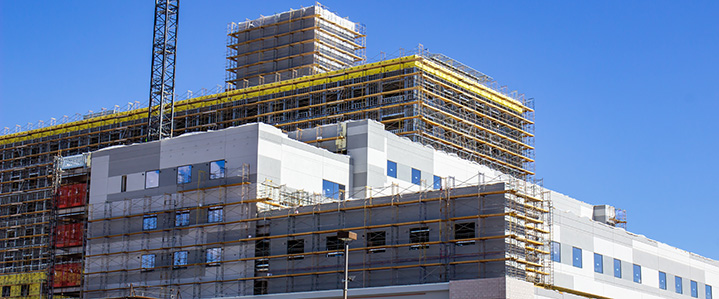Five Steps to an Effective Hospital Safety Committee

Whether chairing your hospital’s safety committee or participating as a member, many of us struggle to energize our committees and to keep momentum. The value your safety committee holds for your hospital depends upon many factors, but there are some common themes to effective safety committees. An active and effective safety committee is an integral part of fostering a culture of proactive safety, performance improvement, and learning at your hospital.
Based on our experience managing environmental health and safety programs for hospitals, we’ve developed a five-step process to promote an active and effective safety committee. These steps are:
- Clarify the Purpose: Develop (or Revisit) the Charter
- Build a Committed Membership
- Encourage Management Support
- Establish and Monitor Appropriate Metrics
- Make Problem Solving the Core Committee Function
1. Clarify the Purpose: Develop (or Revisit) the Charter
This may sound basic, but the committee must have clear goals and objectives. These should be summarized into a committee charter. The charter should establish the “rules of the game”. Who are the minimum members or departments represented? How often does the committee meet? How does the committee communicate with patient safety and quality committees and to the hospital’s governing body? All of these factors should be clearly defined in the committee’s charter. Ask yourself what value your safety committee adds to your hospital. If you can’t come up with a number of answers, you need to re-think the committee’s approach and tactics.
Committed multi-disciplinary membership is one of the most critical aspects to ensuring an effective hospital safety committee. When considering who should attend safety committee meetings, think both about your hospital’s primary safety committee as well as subcommittees. Some hospitals have a large list of attendees at safety committee meetings and the same or similar group of employees involved in related subcommittees, making these committees redundant.
Many hospitals struggle with attendance at safety committee meetings. You should trend the attendance rate for your safety committee over the last year, identify which department contacts/staff have missed multiple meetings, and then find out why. Is it due to time conflicts? Does staff not actively partake in discussions, or does one member (usually the chair) talk for most of the meeting with little input from others? If you don’t know why, ask the members directly. Or have the committee brainstorm on strategies to improve both the attendance at meetings and the quality of the meetings – they will often have good ideas. It has been my experience that many times the same members attend every month (many from the same department) and some key members attend only a few times per year and then rarely participate. The safety committee must maintain the “right mix” of regular attendees to be effective, and if that isn’t happening at your hospital, then you need to find out why and enlist all members to solve the problem.
It is essential that a safety committee have hospital leadership support and appropriate authority (including financial authority) as needed. Committees that lack management support are very often ineffective. If your committee needs a jump start, try asking a physician or vice president, or your boss to chair the committee for one or two quarters. When a safety committee is chaired by a person from upper management (e.g., vice president of support services) it communicates to managers/directors and line employees that hospital leadership takes employee safety and the safety committee process seriously. If you have an ineffective safety committee due to hospital-wide systems issues, The Joint Commission has the authority to cite their “Leadership Standards”.
2. Build a Committed Membership
Committed multi-disciplinary membership is one of the most critical aspects to ensuring an effective hospital safety committee. When considering who should attend safety committee meetings, think both about your hospital’s primary safety committee as well as subcommittees. Some hospitals have a large list of attendees at safety committee meetings and the same or similar group of employees involved in related subcommittees, making these committees redundant.
Many hospitals struggle with attendance at safety committee meetings. You should trend the attendance rate for your safety committee over the last year, identify which department contacts/staff have missed multiple meetings, and then find out why. Is it due to time conflicts? Does staff not actively partake in discussions, or does one member (usually the chair) talk for most of the meeting with little input from others? If you don’t know why, ask the members directly. Or have the committee brainstorm on strategies to improve both the attendance at meetings and the quality of the meetings – they will often have good ideas. It has been my experience that many times the same members attend every month (many from the same department) and some key members attend only a few times per year and then rarely participate. The safety committee must maintain the “right mix” of regular attendees to be effective, and if that isn’t happening at your hospital, then you need to find out why and enlist all members to solve the problem.
3. Encourage Management Support
It is essential that a safety committee have hospital leadership support and appropriate authority (including financial authority) as needed. Committees that lack management support are very often ineffective. If your committee needs a jump start, try asking a physician or vice president, or your boss to chair the committee for one or two quarters. When a safety committee is chaired by a person from upper management (e.g., vice president of support services) it communicates to managers/directors and line employees that hospital leadership takes employee safety and the safety committee process seriously. If you have an ineffective safety committee due to hospital-wide systems issues, The Joint Commission has the authority to cite their “Leadership Standards”.
4. Establish and Monitor Appropriate Metrics
The importance of selecting appropriate metrics cannot be overstated. From Joint Commission compliance, to internal performance improvement goals, all hospitals must set measurable goals. Collecting and analyzing data on safety and Environment of Care performance is critical both from a compliance perspective and to assure continuous improvement. As is often said, if you can’t measure it, you can’t manage it!
Selecting the appropriate metrics is not easy and requires periodic reassessment. Hospital leadership and your safety committee should set the priorities for metrics. These metrics must be selected with forethought on how they will be used to foster performance improvement. Performance monitoring is not an end unto itself. If you have been measuring the same metric for years and no one knows how that data is used to improve performance, you need to go back to the drawing board. If your data collection stops with analysis, your safety committee is missing the real value of performance improvement. After collecting and analyzing data, the safety committee should prioritize improvement opportunities based upon areas of concern from the data analysis, the hospital’s internal goals, national standards and goals, and a standardized risk prioritization process.
5. Make Problem Solving the Core Committee Function
Reporting on performance indicators, programs metrics, reviewing new and revised policies, and reviewing annual reports are critical roles of the hospital safety committee. But meeting these reporting schedules for performance indicators should be viewed as the minimum requirements of your safety committee.
The key role of the safety committee is acting as a multidisciplinary, problem solving team. The best safety committees solve problems, not just report on them. For example, I participated in a safety committee in which we performed Occupational Safety and Health Administration (OSHA) vulnerability assessments that identified several potential hospital risks. The safety committee then took responsibility for following up on the analysis and identified several root causes. This allowed us to propose systemic changes to rectify the issues and identify appropriate metrics to track and measure the improvement.
Similarly, Joint Commission’s Focused Standard’s Assessment (FSA), which is an annual self-evaluation of the commonly cited and most problematic Elements of Performance (EPs), should either be managed by or at a minimum reviewed by the safety committee. Like the OSHA example above, the safety committee should focus on root cause discussion, systemic changes to rectify the issues, and identify appropriate metrics to track and measure the improvement.
Follow the basic principles of The Joint Commission Risk Management Cycle: plan, teach, implement, respond, monitor and improve. As a committee you should ask what actions should be taken to improve and address each issue. The action plans should be discussed at your committee meetings and then reflected in the meeting minutes. Action plans should be:
- Organized
- Purposeful
- Measurable
- Realistic
- Accountable
The action plan must have a process owner(s) who is accountable for the results and the plan should have achievable deadlines. The committee should assess the implementation and effectiveness of these action plans at future meetings, and the outcome should be monitored using metrics.
Participating on an active and effective safety committee is a pleasure. It allows each member to contribute their knowledge and expertise towards improvements to the institution that are both valuable and measurable. If your safety committee is “in a rut”, it’s well worth your effort to initiate change. Your fellow members will thank you.
If you are looking for strategies to improve environmental health and safety at your institution, contact us today to speak with an expert.
Subscribe
to our blog
"*" indicates required fields




